Mon-Fri
9AM - 7PM
Saturdays
9AM - 5PM
Sundays
10AM - 3PM
714 N Avalon Blvd, Wilmington, CA 90744, USA
Mon-Fri
9AM - 7PM
Saturdays
9AM - 5PM
Sundays
10AM - 3PM
714 N Avalon Blvd, Wilmington, CA 90744, USA
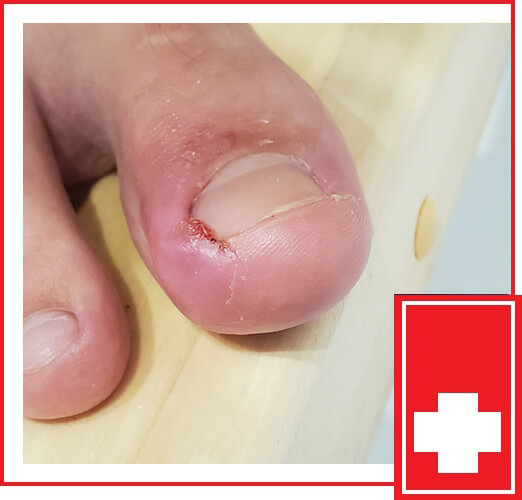
When a toenail is ingrown, it means that the toenail has started to grow into the skin. This can happen on one or both sides of the nail. When this happens, the person will begin feeling pain, and the affected area of the toe will start swelling. The affected area may get infected since the nail is cutting through the toe tissues, and many bacteria surround that area. The most affected toe is the big toe. Having an ingrown toenail can make a person unable to walk or stand due to pain. Fortunately, you can get an ingrown ingrown toenail removal treatment. This treatment is pretty straightforward, and once you have it, your doctor will give you steps to prevent it from occurring again in the future. You need to see your physician immediately if you suspect that you are infected in order to ingrown toenail treatment
What normally triggers in growing toenails is when you cut your nails too short. The corners of the nail get covered by the toe flesh, causing the toenail to start growing deeper into the flesh. You can also get an ingrown toenail when you decide to trim your nail in a round shape or by ripping it instead of cutting it. This is because they won't have clear corners, and a new corner will start forming inside the skin and get stuck. The correct way to cut a toenail is straight across. Other causes of ingrown toenails include:
The first symptom of an ingrown toenail is that the toe starts to swell and becomes tender. Later on, it will start getting red and feeling sore due to infection. Those who are likely to get ingrown toenails are teenagers. Although any of your toenails can get affected by the ingrown toenail condition, it mostly affects the big toe. An ingrown toenail condition can occur in two ways: when the toe flesh starts growing over both sides of the toenail or when the toenail starts growing into the skin. This will cause pain, swelling, and redness at the corners of the nail. Soon, the toe gets infected. Sometimes the affected area may start oozing with pus. The early signs of an ingrown toenail include:
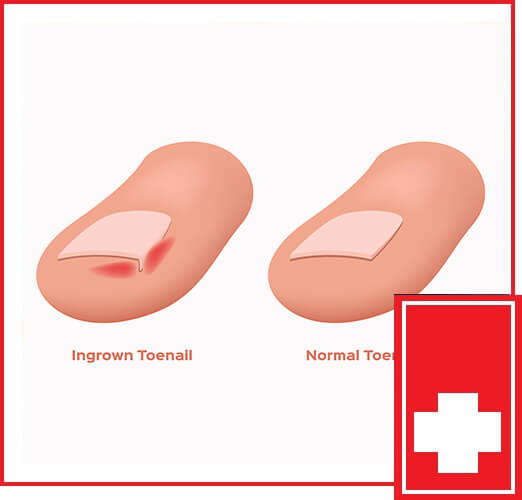
In case the affected area of the toe gets infected, some of the signs may include:
If you have an ingrown toenail, to counter the situation from getting worse, seek ingrown toenail treatments immediately after you notice it.
Treating an ingrown toenail can be as simple as wearing better-fitting shoes or grooming your toes properly.
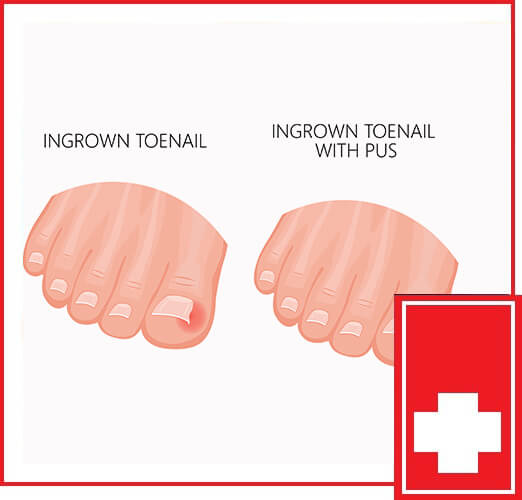
If the ingrown toenail has advanced to exhibit pain, redness, and oozing pus, the doctor at Wilmington Urgent Family Clinic in Wilmington, San Pedro, across Long Beach, Torrance, Carson, or Lomita will have to treat it by trimming or removing the ingrowing part of the toenail by doing ingrown toenail surgery. Since the procedure is painful, the doctor will have to inject the affected area with anesthesia to numb it first, before the procedure begins.
Sometimes an ingrown toenail may still come back again, even after treatment. If this happens, you will require surgery on ingrown toenails. This ingrown toenail removal near me may involve removing the portion of the nail that has been infected, along with the nail bed – The underlying tissue. Once this is done, it may stop the ingrown toenail from coming back again. This procedure can be done using a laser, chemical, or other effective techniques. Once the procedure is completed, the doctor will ask you for topical or oral antibiotics. This is necessary if the ingrown toenail doctor thinks the area is infected or has a high chance of getting infected. The surgery on ingrown toenails may include:
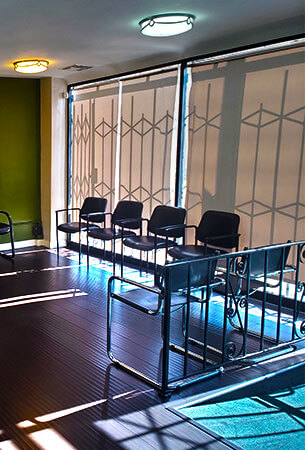
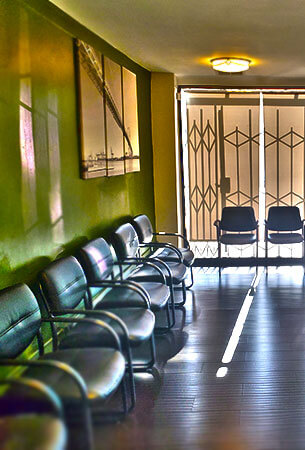
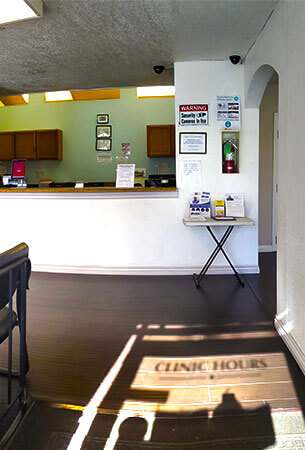
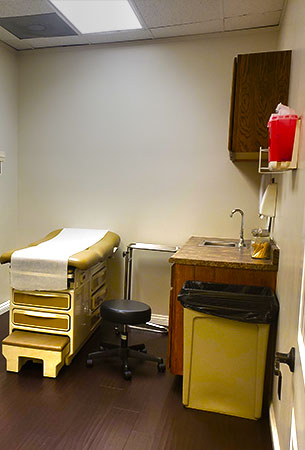
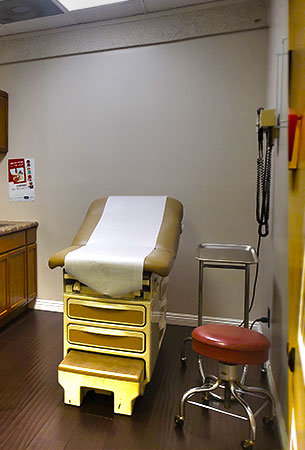
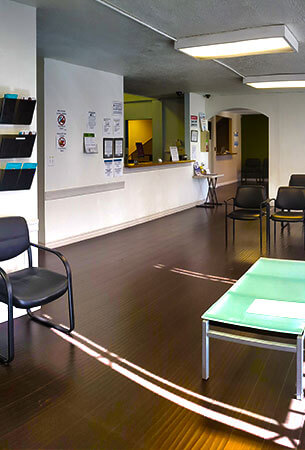
Seeking medical or health care from an urgent care clinic like Wilmington Urgent Family Clinic in Wilmington, San Pedro, across Long Beach, Torrance, Carson, or Lomita is ideal for getting the best and most professional healthcare services with minimal fees. An ingrown toenail doctor near me will offer you a quick response compared to a local hospital emergency room. An urgent care clinic deals with health and medical care services that are time-sensitive. Many emergency rooms tend to focus more on emergency medical situations. These are health conditions that are life-threatening to the patient. Suppose you need an ingrown toenail specialist near me services urgently, but you cannot access your primary care provider's services; in that case, the best option is to go to your nearest urgent family clinic to get high-quality medical care without being forced to wait.
No. It is dangerous to leave an ingrown toenail because it can lead to an infection. An infection can cause fever and more pain. Occasionally, the infection can spread to the bone under the toenail.
Failure to seek medical attention early enough will spread the infection to the toe bone. Besides, infections may also result in open sores (foot ulcers), and the infected area may not get enough blood due to blood loss. The infection area may also suffer tissue death or tissue decay in the affected area.
To relieve tenderness and reduce swelling, you need to soak the affected toenail. You can also insert dental floss or cotton under the toenail. Once you are through soaking the toenail, change the cotton or waxed dental floss below the ingrown toenail edge. This helps to adjust how the toenail grows to its normal position.
To get rid of some of the bacteria in your ingrown toenail, use apple cider vinegar and reduce inflammation. Filling a basin with warm water and adding a quarter cup of apple cider vinegar will give you effective results.
Even though an ingrown toenail may not be very serious, you need to focus on prevention rather than treatment. If caught early, home remedies may help to treat it without causing permanent damage. If it stays long without proper treatment, an ingrown toenail may lead to excruciating pain, and infection may spread to the toe bone.
If you suspect that there is an infection from an ingrown toenail, you need to seek proper medical treatment. About 20 percent of the people who complain about foot problems have an ingrown toenail. Don't let the situation get worse by ignoring the warning signs.
With caution, push a piece of cotton or gauze with tweezers into the ingrown toenail. This makes a space between the skin and the toenail. Cut the ingrown spur or the visible nail corner to relieve pain and pressure.
To permanently stop an ingrown toenail from recurring, the doctor may use a procedure known as a chemical matrixectomy. The procedure may involve removing the part of the nail that is ingrowing or the entire toenail that is affected. A chemical matrixectomy procedure is performed under local anesthesia.
There are many causes of ingrown nails. One of the reasons is congenital, where the nail is just too big for the toe. Another reason is trauma. This may be caused by your toenail being stepped on or when the toenail is stubbed. Failure to trim or groom your nail properly or wearing very tight shoes may cause an ingrown toenail.
When an ingrown toenail develops, it may feel a slight tenderness or become red. If it advances, the area will swell, become even redder, and be very painful. Pus may start oozing from the affected area if the infection worsens. The pus from an ingrown toenail is usually yellow or green.
Occasionally, an ingrown toenail may resolve on its own. However, you will need a home-based remedy. This condition is usually not good for diabetic patients; this is because the redness may refuse to go away, and the swelling may increase. A diabetic person may also experience pain in the muscles and joints. If this happens due to an ingrown toenail, contact your doctor immediately.
Wilmington Urgent Family Clinic is a modern healthcare facility located in Southern California, offering professional
ingrown toenail removal services at reasonable rates. The clinic focuses more on the patient's well-being by following proper diagnoses and treating the patients effectively. No matter what health condition a patient has, Wilmington Urgent Family Clinic is always ready to cater to their medical needs. Doctors and nurses are highly qualified to offer patients superb
ingrown toenail treatment.
Wilmington Urgent Family Clinic services are available for extra hours because we have extended our working time. This means that patients don't need to wait for long hours or make long queues to receive proper medical attention. The
ingrown toenail removal services offered at Wilmington Urgent Family Clinic are based on a walk-in, and this means that there is no need to schedule an appointment with any of our doctors to receive urgent care. Whether you are injured and want urgent
ingrown toenail treatment or you've just walked in for a regular checkup, Wilmington urgent care is always at your service. We have modern and latest medical equipment to provide accurate diagnosis and
ingrown toenail treatments, including x-ray machines.
Wilmington urgent care is among the best walk-in
ingrown toenail doctor near me in Los Angeles because it offers other convenient services, such as physical examinations. To get high-quality ingrown toenail treatment, just type the ingrown toenail treatment near me in Google's search bar. Once you do that, you will explore all the healthcare services offered by our professional and experienced healthcare professionals. Our urgent clinics are found in several locations in Southern California.

No more waiting for long hours in emergency rooms when you have Wilmington Urgent Care. Fix your appointment today and get attended right away.